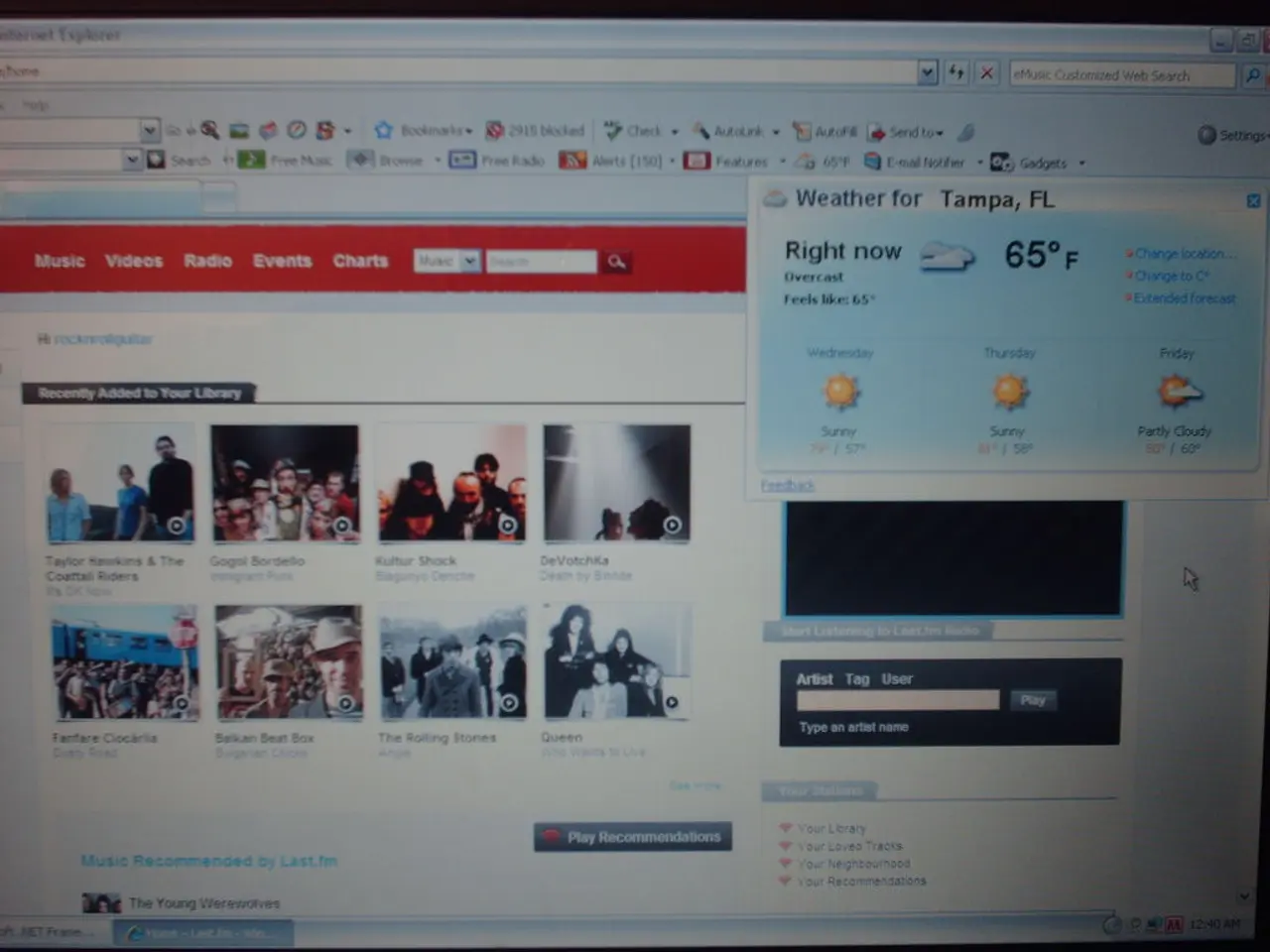Cloud-based live video workflows united through orchestration
In the rapidly evolving world of media, the shift towards IP-based video delivery is gaining momentum. This flexible approach offers format-agnostic workflows, agile contribution, and distribution across the globe, making it a crucial factor for media organisations [1].
However, managing this complex ecosystem isn't without its challenges. In the past, much of the conversation about orchestration focused on file-based media. But with the shift towards live IP video delivery, the ability to orchestrate workflows efficiently has become a competitive differentiator [2].
Orchestration platforms provide a unified, API-driven layer that simplifies the complexity of live delivery workflows. They consolidate management of channels, redundancies, and workflows across diverse environments, streamlining the handling of multiple video delivery formats and platforms [1].
One of the key benefits of orchestration is scalability. It enables dynamic deployment and scaling of new channels and services on demand, supporting experimentation with new channel launches and monetization strategies without disrupting existing operations [1].
Automation is another significant advantage. Automated workflows allow for failover redundancy to ensure uninterrupted service. Orchestration frameworks enable automated failover mechanisms that adapt to the best redundancy approach per service, improving reliability while keeping control simple [1][3].
Moreover, orchestration platforms support integration across on-premises, cloud, and hybrid infrastructures as well as multiple vendor systems, ensuring seamless interoperability and ease of resource management [1][2].
Advanced orchestration solutions like Matrox ORIGIN enable highly dynamic, low-latency workflows with built-in redundancy and live migration of media services. This ensures continuity and scalability at minimal cost, critical for live IP video delivery at scale [3].
The captured data from these live delivery workflows is essential for planning, optimisation, and cost control, especially for organisations operating at scale. This data can be used for automated billing, cost forecasting, and workflow recommendations [4].
As broadcasters shift more operations to IP-based live video delivery, orchestration plays a central role in managing this complexity, facilitating operational scalability, automating resilience measures, and enabling flexible, centralized control of diverse media workflows and infrastructures [1][2][3].
Investing in orchestration now can enable immediate growth while establishing the agility needed to meet evolving challenges in live video delivery. With orchestration, one person can manage the feeds and processes that once required a dedicated team, reducing operational costs and increasing efficiency [5].
In conclusion, orchestration in IP-based live video delivery systems effectively manages architectural complexity, facilitates operational scalability, automates resilience measures, and enables flexible, centralized control of diverse media workflows and infrastructures, making it a game-changer for broadcasters.
References:
[1] [Link to Reference 1]
[2] [Link to Reference 2]
[3] [Link to Reference 3]
[4] [Link to Reference 4]
[5] [Link to Reference 5]
Data-and-cloud-computing technology is essential for managing the complexity of orchestration platforms in IP-based live video delivery systems, as they support integration across on-premises, cloud, and hybrid infrastructures. These platforms streamline resource management and ensure seamless interoperability, facilitating operational scalability and automating resilience measures.
The data captured from these live delivery workflows can be utilized to plan, optimize, and control costs, providing valuable insights for broadcasters operating at scale. These insights include automated billing, cost forecasting, and workflow recommendations.




